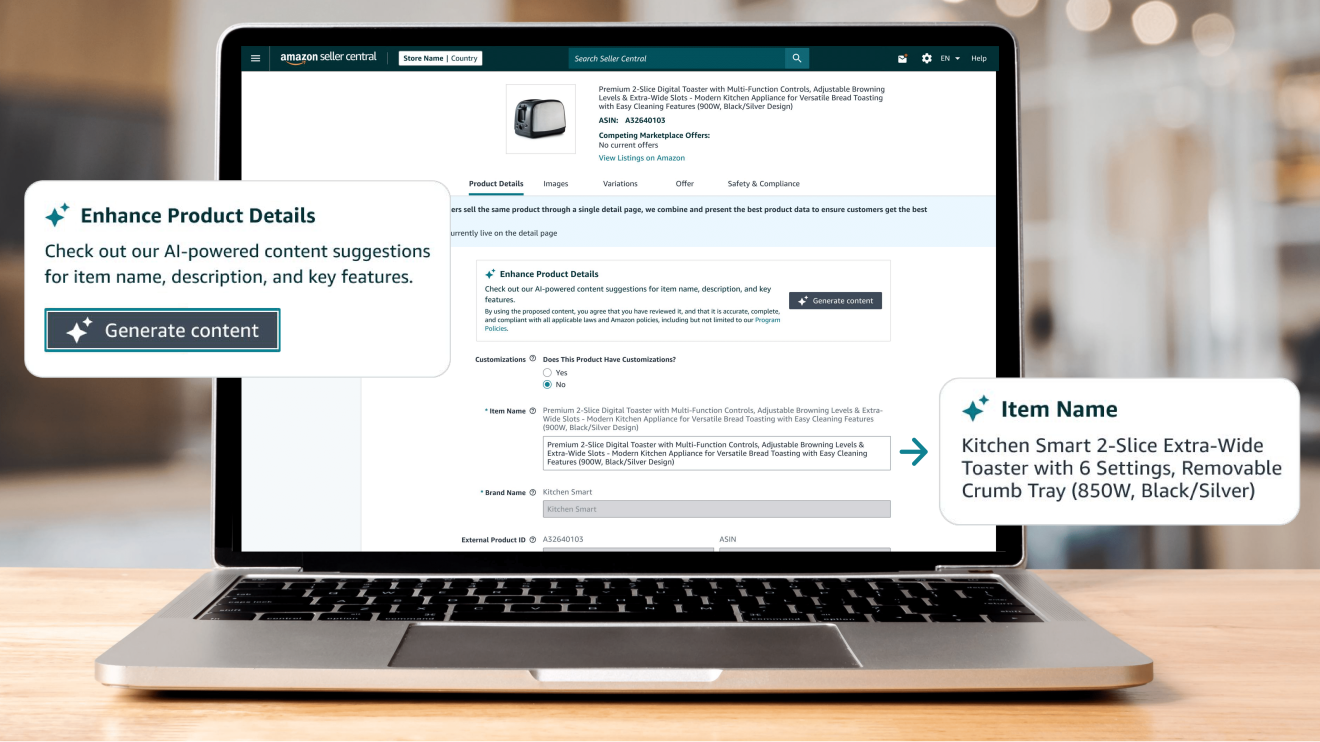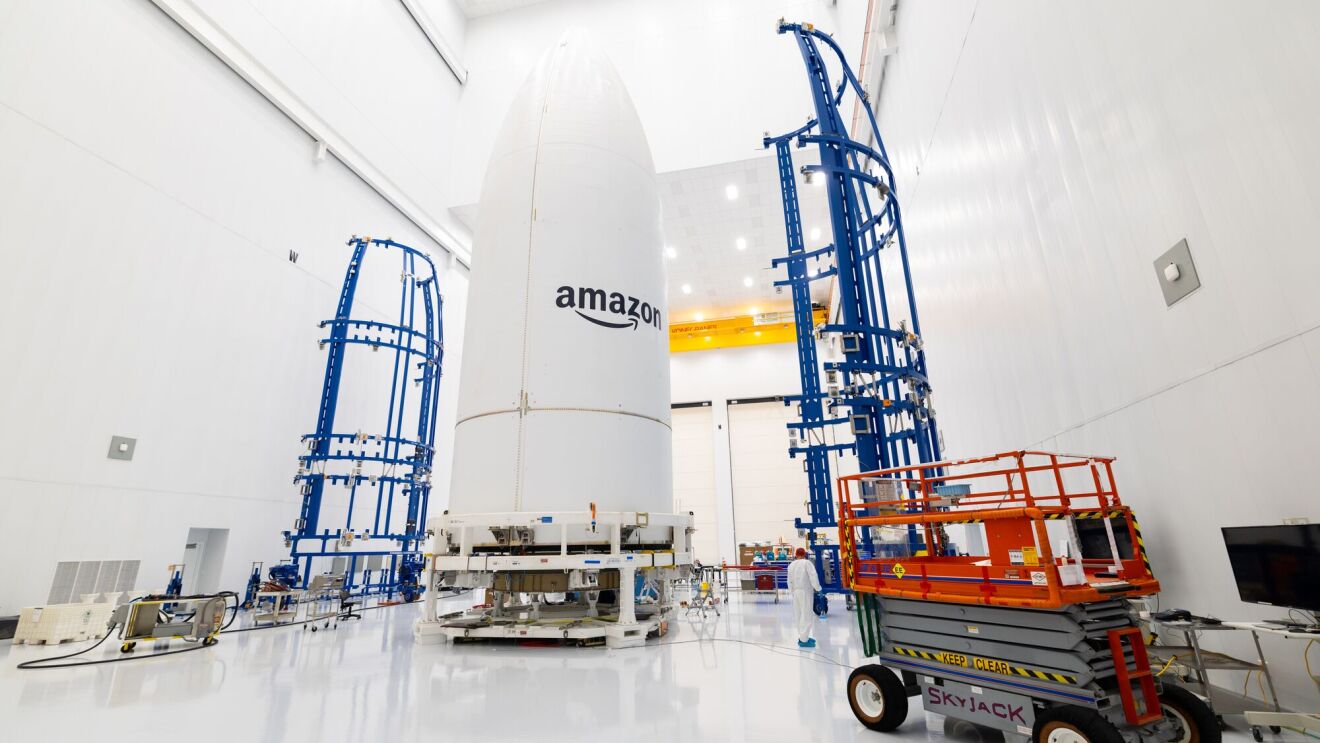Since the successful launch and deployment of two prototype satellites in October 2023, Project Kuiper has been conducting extensive testing of its end-to-end communications payload and network. In November, we confirmed we had validated all priority systems and subsystems within 30 days of launch, and we shared a first look at demos over the Kuiper network. One critical system that was part of that testing—but has remained confidential until now—was our optical inter-satellite link (OISL) capabilities.
 Animation of Project Kuiper’s satellite constellation.
Animation of Project Kuiper’s satellite constellation.Our prototype satellites, KuiperSat-1 and KuiperSat-2, include advanced optical communications payloads. We have completed multiple successful demonstrations of that next-generation technology, maintaining 100 gigabits per second (Gbps) links over a distance of nearly 621 miles (1,000 kilometers) for the entire test window. These tests validated the final component of Project Kuiper’s advanced communications architecture, and the results ensure that OISLs will be operational on our first production satellites, slated for launch in early 2025.
“With optical inter-satellite links across our satellite constellation, Project Kuiper will effectively operate as a mesh network in space,” said Rajeev Badyal, Project Kuiper's vice president of technology. “This system is designed fully in-house to optimize for speed, cost, and reliability, and the entire architecture has worked flawlessly from the very start. These immediate results are only possible because we approached our OISL architecture as one part of a fully integrated system design, and it’s a testament to this team’s willingness to invent on behalf of customers. We’re excited to be able to support these next-generation OISL capabilities on every Kuiper satellite from day one.”
Operating a next-generation orbital laser mesh network
OISLs use infrared lasers to send data between spacecraft as they orbit the planet. Instead of being limited to sending data between an individual satellite and antennas on the ground, OISLs allow satellites to send data directly to other satellites in a constellation. We are equipping every Project Kuiper satellite with multiple optical terminals to connect many satellites at a time, establishing high-speed laser cross-links that form a secure, resilient mesh network in space. These capabilities increase throughput and reduce latency across our constellation, and provide more flexibility to connect Kuiper customers across land, sea, air, and space.
01 / 03
Another benefit of OISLs is the speed at which you can move data around the world. Light travels faster in space than it does through glass, which means that Kuiper’s orbital laser mesh network can move data approximately 30% faster than if it traveled the equivalent distance via terrestrial fiber optic cables. And because Project Kuiper leverages AWS service and infrastructure to route data traffic, we can reduce latency even further across our network.
Advancing the state of the art in OISL technology
OISLs represent a long-standing challenge for low Earth orbit (LEO) satellite broadband connectivity. To establish and maintain laser links, you need to minimize the spread of light to ensure a strong signal; you need to establish contact across distances of up to 1,616 miles (2,600 km); you need to maintain that connection between spacecraft moving at speeds of up to 15,534 miles per hour (25,000 km per hour); and you need to accomplish all of that while compensating for satellite and flight dynamics. Project Kuiper designed a state-of-the-art optics and control system capable of addressing these challenges.
 Project Kuiper tested OISL technology extensively in the lab before testing in space.
Project Kuiper tested OISL technology extensively in the lab before testing in space.Although this system performed well during extensive testing in a lab environment, our Protoflight mission provided an opportunity to test the end-to-end architecture in space. In early November, we established the first successful optical links between our two prototype satellites, allowing us to send and receive data at speeds of up to 100 Gbps for entire test windows of an hour or more. These tests demonstrated our ability to establish a single bi-directional link between two satellites, and initial data indicates that our design will be able to maintain cross-links between multiple satellites at once—the critical feature of a next-generation mesh network in space.
Delivering resilient, secure connectivity for enterprise and public sector customers
Amazon’s OISL capabilities will allow Project Kuiper to move and land data anywhere via its mesh network in space, bringing secure, resilient connectivity to a wide range of enterprise and public sector customers. This is especially important for those operating in regions without a nearby ground station—for example, a cruise liner in the middle of the ocean or an aircraft making a transatlantic flight—allowing them to securely uplink data from effectively any location on Earth, transmit it through space via laser communications, and downlink it to their destination of choice.
“Amazon’s optical mesh network will provide multiple paths to route data through space, creating resiliency and redundancy for customers who need to securely transport information around the world,” said Ricky Freeman, vice president of Kuiper Government Solutions, a dedicated division within Project Kuiper focused on serving public sector customers. “This is especially important for those looking to avoid communications architectures that can be intercepted or jammed, and we look to forward to making these capabilities available to public sector customers looking to move and land data from remote locations to their desired destination.”
Project Kuiper is already supporting public sector research and development in optical communications technology, and we look forward to bringing our advanced communications capabilities to additional enterprise and government customers as we begin to deploy our OISL-equipped production satellites.
Project Kuiper is beginning satellite manufacturing ahead of a full-scale deployment that starts in early 2025.
To learn more about the Protoflight mission and next steps for the program, check out our latest mission updates.













